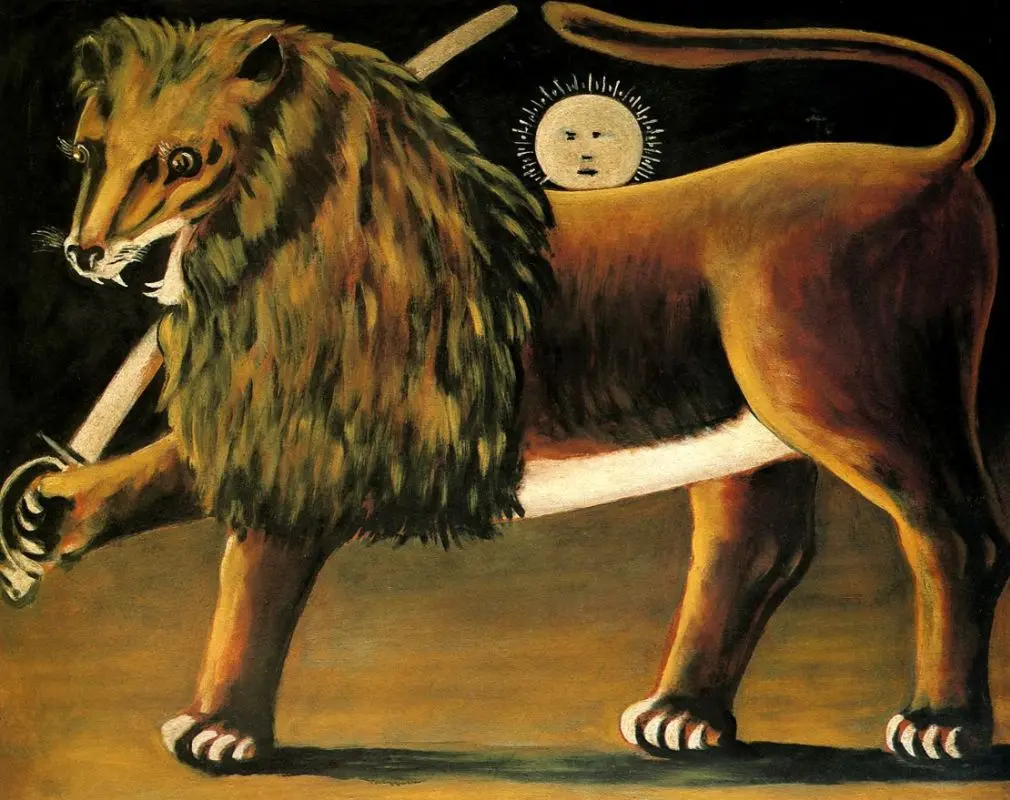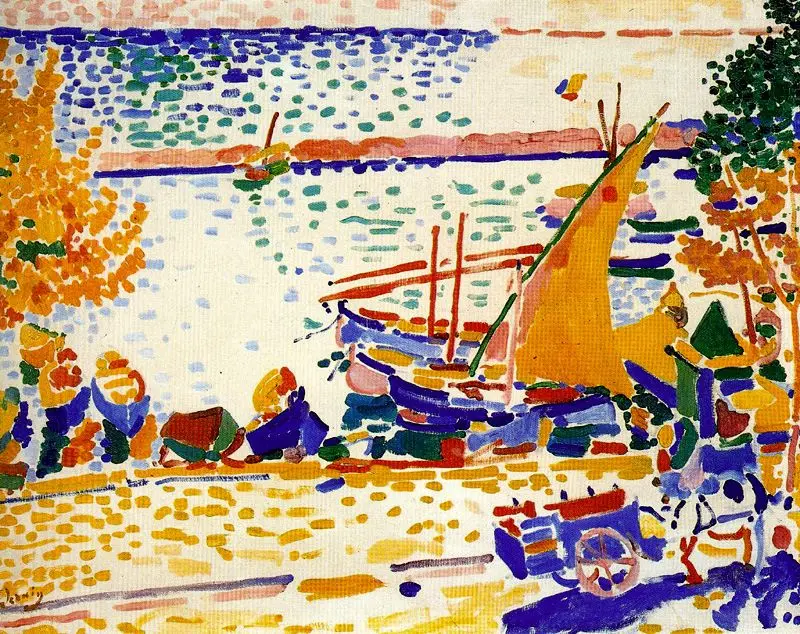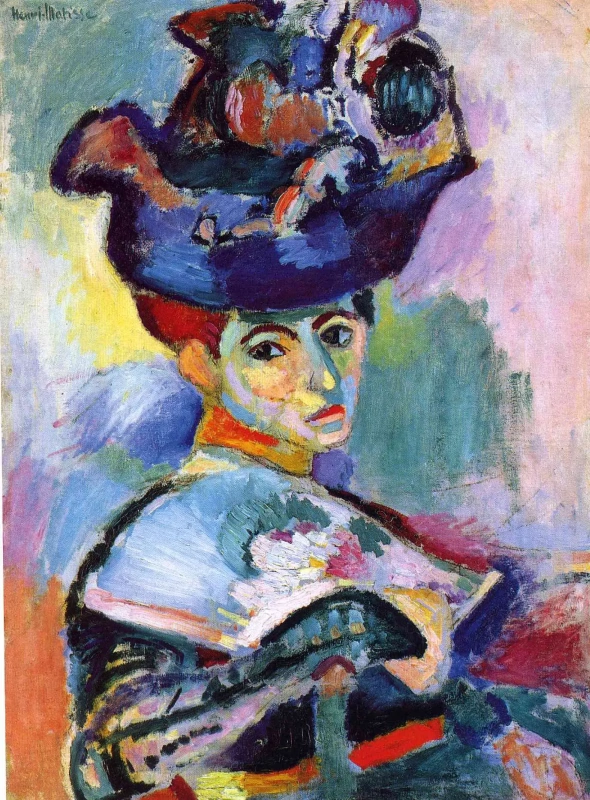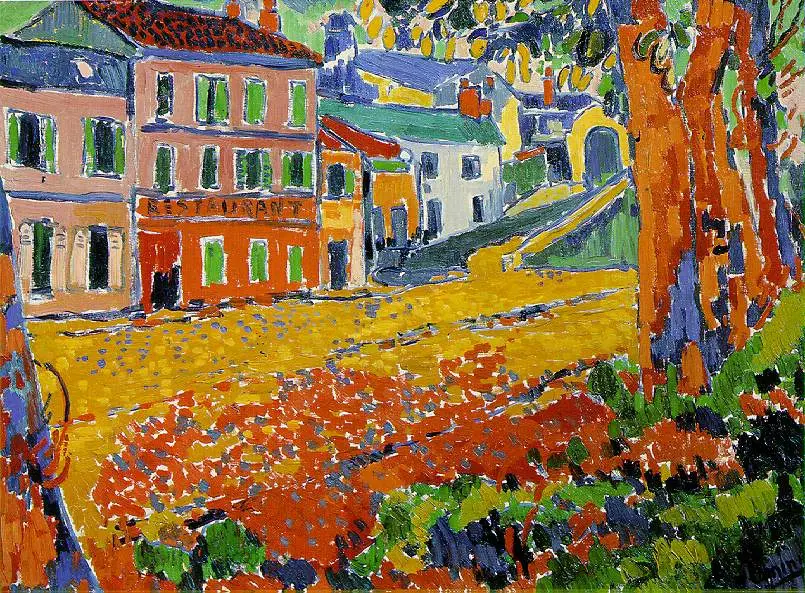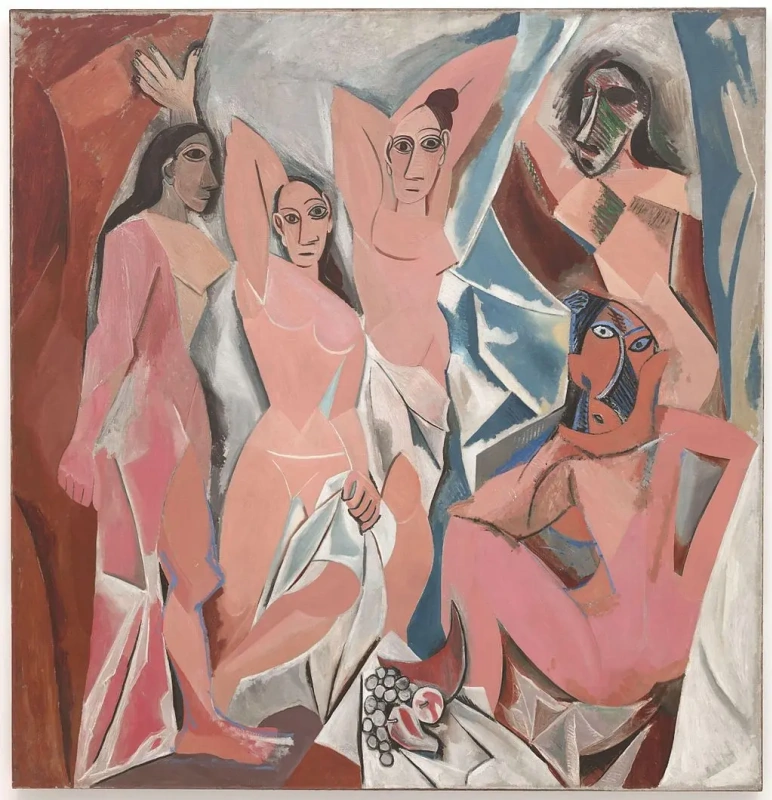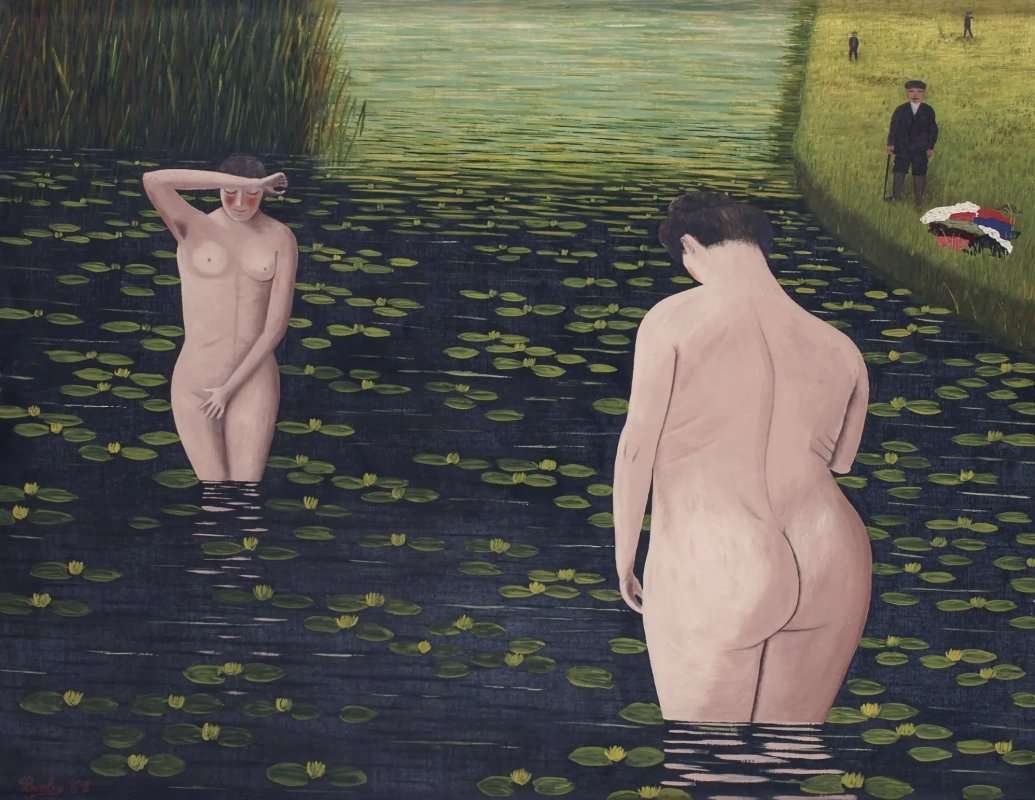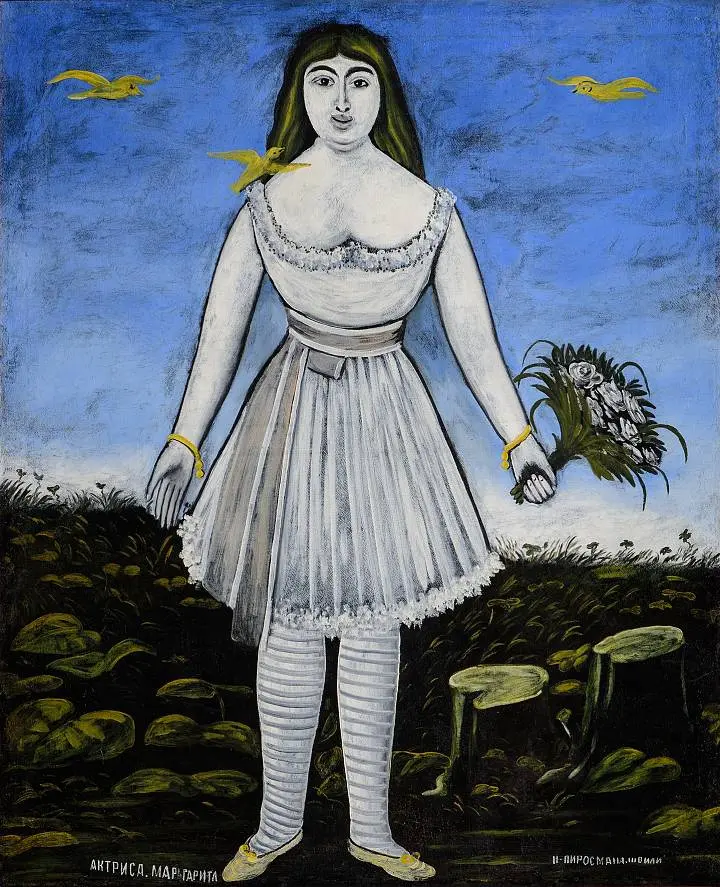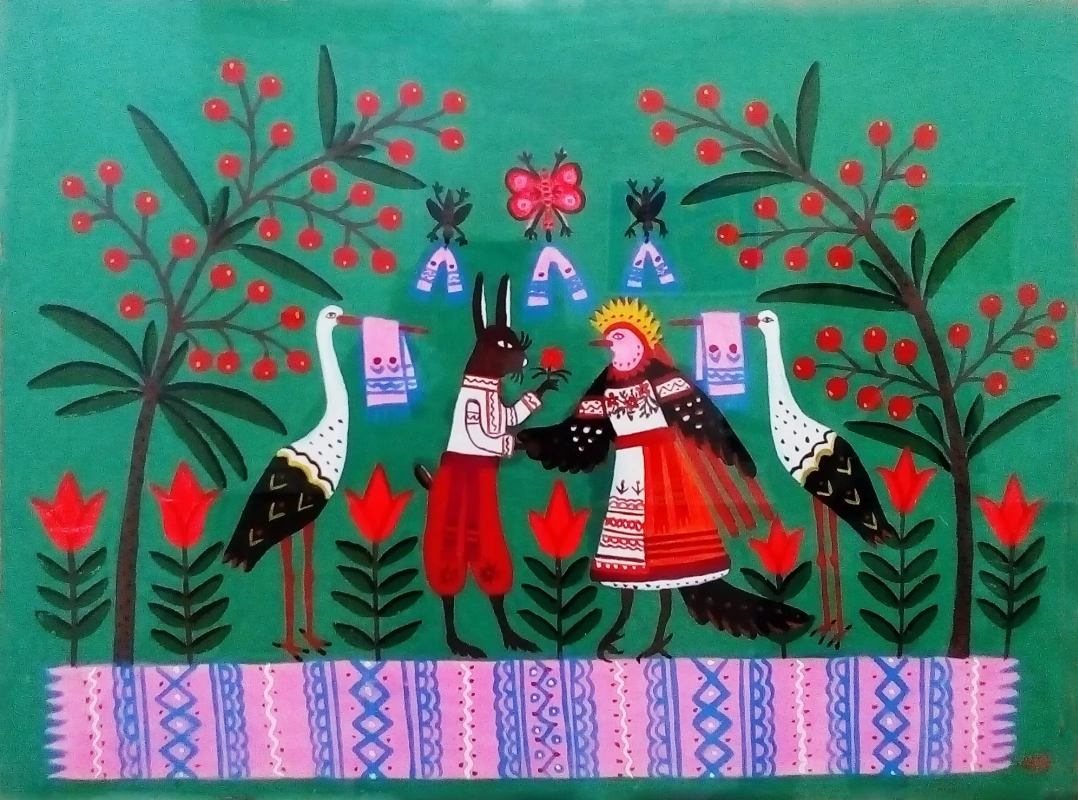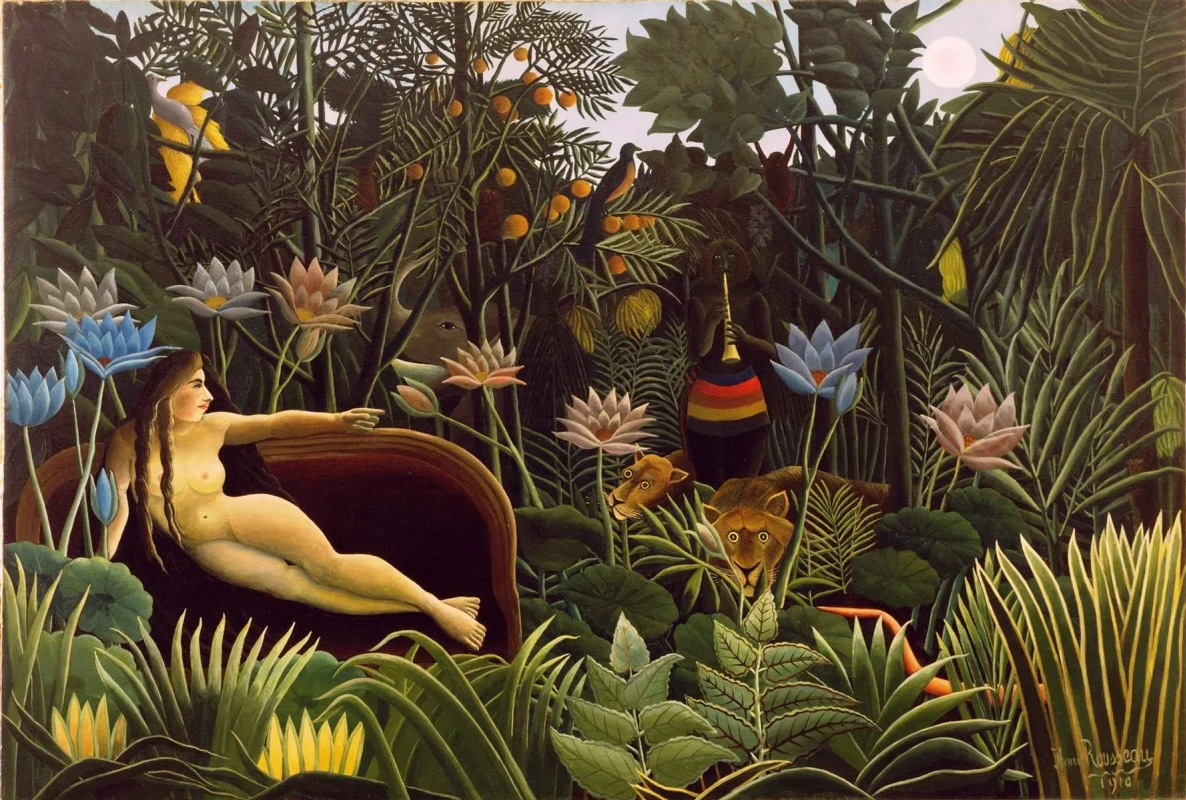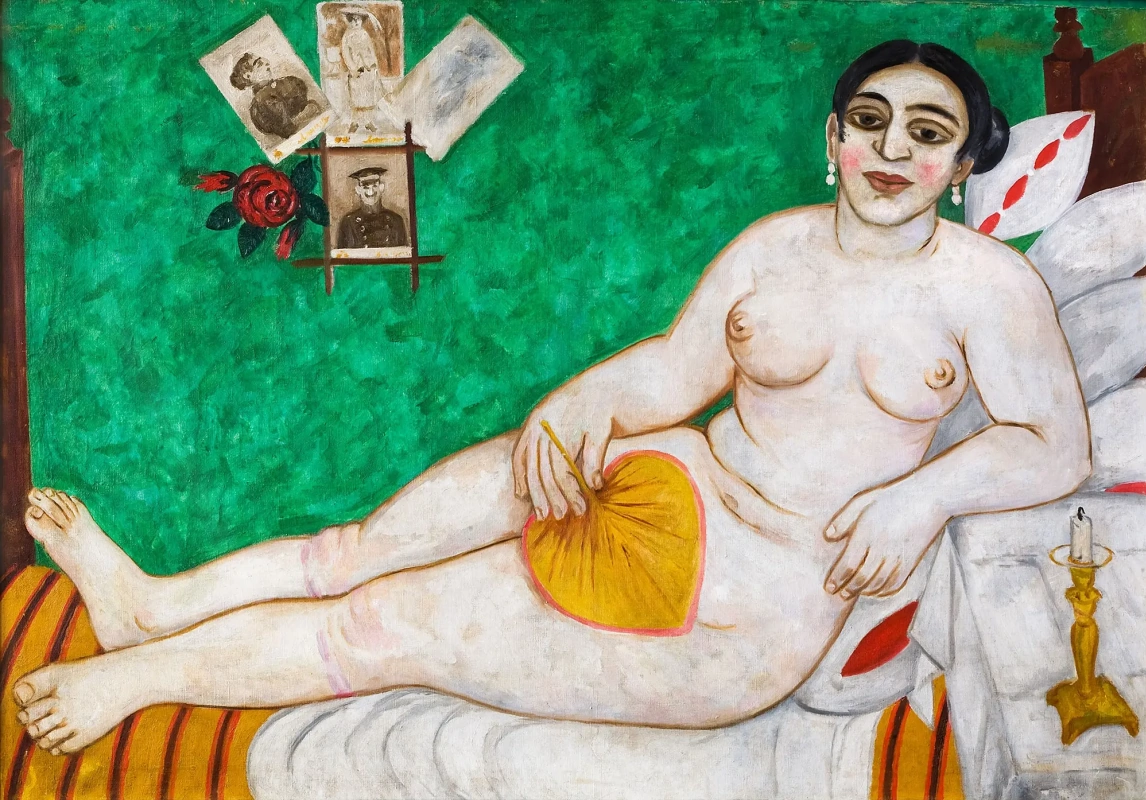Primitivism
Be like children
When it comes to the term "primitivism" in art, it’s not all that simple. First of all, art historians don’t always agree about its meaning. Besides that, the number of synonyms denoting the same thing makes everything even more difficult. Or they might be not synonyms at all — depending on the point of view you hold.
Let's sort the terms out
In the late 19th and early 20th centuries, some progressive European artists began to go crazy over the expressiveness and pithiness of the artifacts of primitive cultures. The plain and crude naivety of African ritual masks and wooden statues seemed to them to be a simple and obvious answer to the search for ways of overcoming close-mindedness and stagnation in academic painting. By that time, had already lost its former freshness and scandalousness, and therefore, could no longer be the shaker of foundations.
The works of primitive cultures — the ancestors of modern primitivist masterpieces — include both prehistoric rock painting or stone idols, and cultural traditions of modern tribal peoples inhabiting Africa, Oceania and the like. African masks, similar to these ones, became a decisive factor in the emergence of many avant-garde movements at the beginning of the 19th century.
Photo source: newpackfon.ru
In one of the coordinate systems, it is believed that primitivism is all about the work of professional artists who received formal artistic training and have all the necessary skills, but still consciously choose to simplify stylistic and technical methods in order to follow primitive art. In this case, the heritage of self-taught artists who paint pictures unskilfully and childishly belongs to naïve art.
In another universe of art history, primitivism and naïve art are complete synonyms and interchangeable concepts. From this point of view, the term "naïve art" is a kind of euphemism, necessary for a greater euphony, in contrast to the term "primitivism," which in many languages has a somewhat derogatory connotation.
We’ll take the second version as axiomatic and keep in mind that primitivism, as well as naïve art, is a style that includes works by non-professional artists whose measure of talent makes up for the absence of some skills, such as the ability to use perspective or convey light and shade.
For the heritage of the sophisticated masters, who are competent enough to stylize some kind of primitive art (for example, ancient icon painting, ethnic motifs or cheap popular prints), we will use the term "neo-primitivism". That is what members of the Russian artistic groups "Jack of Diamonds" and "Donkey's Tail" did at the beginning of the previous century.
Kazimir Malevich. Children, 1908
Natalia Goncharova. Bleaching Linen, 1908
While in Western Europe artists only partially resorted to naïve art techniques in their works using them as a basis for developing such directions as Fauvism, or Expressionism, in Russia neo-primitivism became a significant trend that gave rise to Suprematism and shaped it. Therefore, sometimes Western art historians use the term neo-primitivism solely in relation to Russian adherents of the ideals of naïve art, who zealously propagandized and applied them in practice.
According to Alexandre Benois, "The special thing about neo-primitivism was that its representatives sought not to stylize or imitate the folk masters, but to express the essential aspects of folk aesthetics. The brightest example here is the work of Larionov, who — in accordance with folk aesthetics — equalizes the important and unimportant, the high and the base, going to extremes in cultivating the principles of fence drawing and 'barrack painting'."
Mikhail Larionov
Venus and Mikhail, 1912
Back to the roots
The primitivists' path through hardships to the stars was cleared by such recognized creators as
Gauguin,
Picasso and
Matisse. Seeking a cure from a serious illness — as Gauguin marked down the blessings of civilization — the artist went to Tahiti and merged with nature in every way enriching his style with the vibrant colours of the exotic islands and the naïve images of the local culture; many others followed his example.
German expressionists
Emil Nolde and
Max Pechstein also tried their luck in the vast expanses of Oceania
, while their fellow artists
Ernst Ludwig Kirchner and
Erich Heckel reconstructed the primitive scenery right in their workshops. French artists did not need to travel far in search of inspiration
, it was not even necessary for them to leave Paris. From French colonies in West Africa
, traders brought to the capital various ethnic handicrafts
, which were later placed in museums and small shops.
In his book
Obscure art. From Monet to Banksy, Will Gompertz tells how the artist
Maurice de Vlaminck accidentally became a catalyst for a growing interest in primitive art and
, as a result
, the emergence of such movement as Fauvism. In 1905
, he saw three carved African masks in one of the Parisian cafes. Under the influence of the expression of "instinctive art", as he called it
, Vlaminck bought the masks from the owner of the establishment and hurried to show them to his fellow artists.
Start XX centuries, 68×90 cm
Henri Matisse and
André Derain shared Vlaminck’s passion for
Van Gogh's expressive palette and Gauguin’s exotic search. The artist was right: his friends considered the acquired artifacts a manifestation of the freedom of thinking
, clear from the materialistic ideals of civilization
, and retaining childlike ingenuousness and naivety. The outcome of the meeting of the three artists was the conclusion that colour and emotion on the canvas are dominant
, unlike the and accuracy of the image.
As a result
, there appeared paintings
, in which they tried to bring their new artistic principles to life. Painted in the insane for that time combinations of pure
, unmixed colours
, which were applied with sharp separate strokes
, the paintings were so provocative that the organizers of the 1905 Salon refused to display them at first. It was only thanks to Matisse’s personal authority that he managed to open the door for the trio to participate in the Salon with their experiments.
Then there would be harsh
, angry comments from art critics
, one of whom
, as is often happens
(see
impressionism), would give the name to a new movement — Fauvism: seasoned critic Louis Vauxcelles would say that the vividly coloured paintings were created by the wild beasts — "les fauves" in French. But that’s another story.
How Picasso discovered Rousseau
The art of the young and promising Spaniard also took a quantum leap under the direct influence of primitive art and its confessors. When Picasso saw the bleeding edge of Matisse’s art — those eye-catching one-of-a-kind canvases, free from any academic prejudice, he tied himself in knots. After a moment’s consideration, Picasso went to the ethnographic museum, housing an extensive collection of African masks. He went through a kind of initiation rite there. Who knows, what if those ritual objects really had magic power?
The artist recalled: "I was all alone. I wanted to get away. But… I stayed. … I understood something very important… was happening to me… I kept looking at the fetishes. I understood: I too am against everything. I too think everything is unknown, is the enemy! All alone in that awful museum, with the masks, the redskin dolls, the dusty mannequins. Les Demoiselles d’Avignon must have come to me that day, but not at all because of the forms: but because it was my first canvas of exorcism — yes, absolutely!"
Pablo Picasso
Les Demoiselles d’Avignon (The Young Ladies of Avignon), 1907
Thus
, several tribal artifacts made Picasso create a painting that gave rise to cubism
, and
, as a result
, and a dozen other -isms. But it wasn’t the end of their magic intervention in the artistic life of the French capital. Falling for the charm of primitive art
, Picasso could not miss the phenomenon of the rising star of naïve art
, and had his hands in making Paris take seriously the unprofessional creations of humble customs officer
Henri Rousseau.
Despite having no art education
, "Le Douanier"
(or "customs officer", as Parisian bohemia nicknamed him), had grand ambitions in painting. Rousseau’s childlike ingenuousness played into his hands — otherwise he would hardly have dared to present his awkward experiments to the picky public of the 1986 Salon des Indépendants
, in which all interested artists could participate.
No miracle happened — critics strongly ridiculed the forty-year-old beginning artist, who had no idea about linear perspective or principles of compositional structuring. Yet there was one voice that stood out from the harmonious choir of mockery — that of maitre Camille Pissarro, who commented on the rich tones of Rousseau’s paintings.
Henri Rousseau
Carnival Evening, 1886
The failure at the Salon des Indépendants could not break the will of the determined Customs officer. Just on the contrary, he left his work to devote all his time to the career of an artist. His biggest fan — Picasso — also overwhelmingly believed in him. Once, in a provincial shop, he found Rousseau’s painting, which was sold there for the price of a used canvas — even the ragman did not dare to ask more for it. The Spaniard immediately bought it and subsequently kept it until the end of his days, replying that it "took hold of me with the force of obsession… it is one of the most truthful French psychological portraits."
Moreover, he threw a dinner party in honour of a strange portrait, and invited there the entire Parisian beau monde and the hero of the occasion himself — the first superstar of naïve art. Picasso hanged the painting of the Customs officer in the most prominent place of his own studio, and its author was seated on a chair that looked more like a throne. It was a real triumph of an amateur artist, although part of the public probably perceived what was happening as a particularly sophisticated ridicule or joke.
But not Picasso. He is believed to have said that it took him four years to paint like
Raphael, but a lifetime to paint like a child. That’s why he admired Rousseau’s gift
, which allowed him to safely skip these stages and start creating masterpieces of primitivism right off.
What are the paintings by primitivists made of?
What signs determine that you are looking at the work of naïve art
, and not the work by an expressionist
, abstractionist
, or a representative of some other movement? By the way
, Mark Rothko, who became famous in the field of abstract
, had been looking for inspiration and a secret of pictorial art in children’s drawing and even devoted a whole book to it — even before wholeheartedly cultivating the colourfield painting.
Examples of primitivism are indeed characterized by common mistakes that children make when drawing. But it doesn’t mean that every painting includes all of the mistakes listed below. Some of the things were within the self-taught artists' power.
1. The absence of linear perspective: objects in the foreground are of the same size as the ones in the background, which makes their relationship in space incomprehensible, and the image loses its volume.
2. Background details are painted with the same accuracy as the objects in the foreground. The consequences are the same as in the previous point.
3. Colours don’t lose their brightness and saturation in proportion to distancing the objects from the front edge of the canvas. The image becomes flat and resembles a postcard.
4. There are no signs of any sources of light: even when there’s the sun in the picture, all surfaces are equally bright, people and objects do not cast shadows, and there are no highlights either.
5. Disregard of anatomy: proportions of the human body, mistakes in the images of animals can be obvious in the works of the primitive artists. But what about Picasso, Salvador Dalí, Francis Bacon, and many others, whose works look like their creators knew nothing about the organization of human body? Are they primitivists, too? — No, they are not. Looking at the painting by a representative of naïve art, you will see that they tried their best while creating it, and it is thanks to these efforts that their naïve attempts to reach the great artists look so touching and have irresistible charm. The above-mentioned creators didn’t pursue such goals, and "being liked by everyone" definitely wasn’t on their lists.
6. Like children, primitivists do not distinguish between reality and fantasy. People and unicorns can happily coexist in their paintings — not within the framework of surrealistic fantasy, but as part of everyday life. Lions in such works pose no threat to people, and a deer can resemble a fantastic creature.
7. Finally
, we got closer to the fundamental difference
, which gives the answer to the naturally arising question: "What's the difference between the non-objective paintings of modernists in the style of "my 5-year-old-someone-can-do-this-better" and the works of primitivists?" Non-professional artists depict objects with the degree of realism that is available to them due to their limited knowledge
, skills and abilities while the representatives of avant-garde art are trying hard to forget what they were taught in art schools or pretend that they did not attend them at all. But the harmony and thoughtfulness of the composition
, crazy or the cultural background
, treacherously showing through the falsely naive and deliberately unskilful image
, will still give away a professional. Right
, Comrade
Chagall and Herr
Klee, you can log out
, we still recognize you.
Marc Chagall. The Old Man with Glasses, 1950s
Paul Klee. Puppet Theatre, 1923
Artists who worked in the style of primitivism
Henri Rousseau,
Niko Pirosmanashvili,
Ivan Generalić,
Grandma Moses,
Maria Prymachenko,
Camille Bombois, Nikifor Krynicki
, Kateryna Bilokur, Polina Raiko
, Séraphine Louis, Oles Semernya.
Significant paintings by the primitivists
The story of the Pirosmani’s painting became a legend. It was this painting that was perpetuated in Andrei Voznesensky’s poem, which was later musicalized by Raimonds Pauls, who created the song "Million Scarlet Roses," which is so popular in the post-Soviet states. It is about the attempts of the poor artist to win the heart of inaccessible French actress Margaritta Dé Sevre, who in 1905 performed in Tiflis, where Pirosmani got a crush on her. According to some versions, among the "sea of flowers" that desperate Niko sent to the hotel of his sweetheart were not only roses, and not only the scarlet ones, but also poppies, peonies, lilies, lilacs, acacia and other floral gifts of the Georgian land. All that the artist got for his move was just one kiss from Margaritta. But many years later, in 1969, the actress, who had lost both the crowd of fans and the former attractiveness, daily came to the Louvre, where the painting by Pirosmani was exhibited at that time, and spent hours looking at her portrait. This way, art outlasted the short-lived love and transient beauty.
Limitless imagination, bold colour solutions, disarming folk flavour — these are just a few components of the secret of the unpretentious (at first glance) works by the Ukrainian provincial artist. Having seen the paintings by Maria Prymachenko at least once, one would never confuse them with the works by other artists — they are too original and authentic. They were warmly welcomed outside the artist’s homeland: Maria’s works had a roaring success at exhibitions in Paris, Warsaw, Prague and other European cities.
The Dream is considered one of the best paintings by Rousseau. The painter gave this comment to his later (and, possibly, the last) work: "Falling into sweet sleep, Yadwigha, heard in a lovely dream the sounds of a musette played by a kind enchanter. While the moon shone on the flowers, the verdant trees, the wild snakes lent an ear to the instrument’s gay airs." The painting impresses the viewer with its technical complexity, and the richness of the palette, which Pissarro noted even in the first painting by Rousseau, reaches its climax here: no joke, there are more than two dozen shades of green alone! Even the most stinging critics could not resist the hypnotizing influence of The Dream, and Rousseau’s compatriot and contemporary, writer André Breton, said that the picture "absorbed all the poetry and all the secrets of our time".
You are an expert if you:
— do not hesitate to use the word "primitivism", referring to the medieval masterpieces by
Rogier van der Weyden or
Duccio di Buoninsegna.
— can immediately distinguish the chaste beauty painted by the true primitivist Pirosmani from a fake "naïve-like" art of Mikhail Larionov.
— accept the deliberate simplification
, necessary for creating illustrations and caricatures at face-value
, considering them to be examples of pure primitivism.
— think that any work of art that makes you tempted to call it "scribbles" belongs to primitivism. In fact
, primitivism
(including the conscious
, intentional one) is not only an unskilful form
, but also a special take on the essence of things: pure
, ingenuous
, childlike or even primeval one. There are huge
, adult
theories behind the paintings of Malevich
, Kandinsky and
Mondrian.
Title illustration: Niko Pirosmani
(Pirosmanashvili).
Lion and the SunAuthor: Natalia Azarenko
